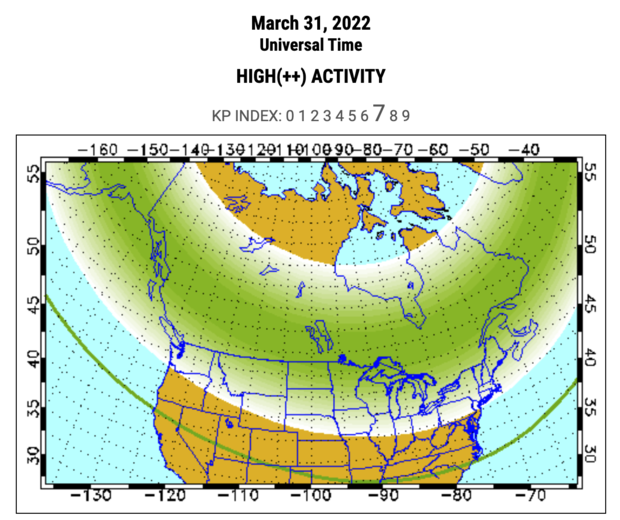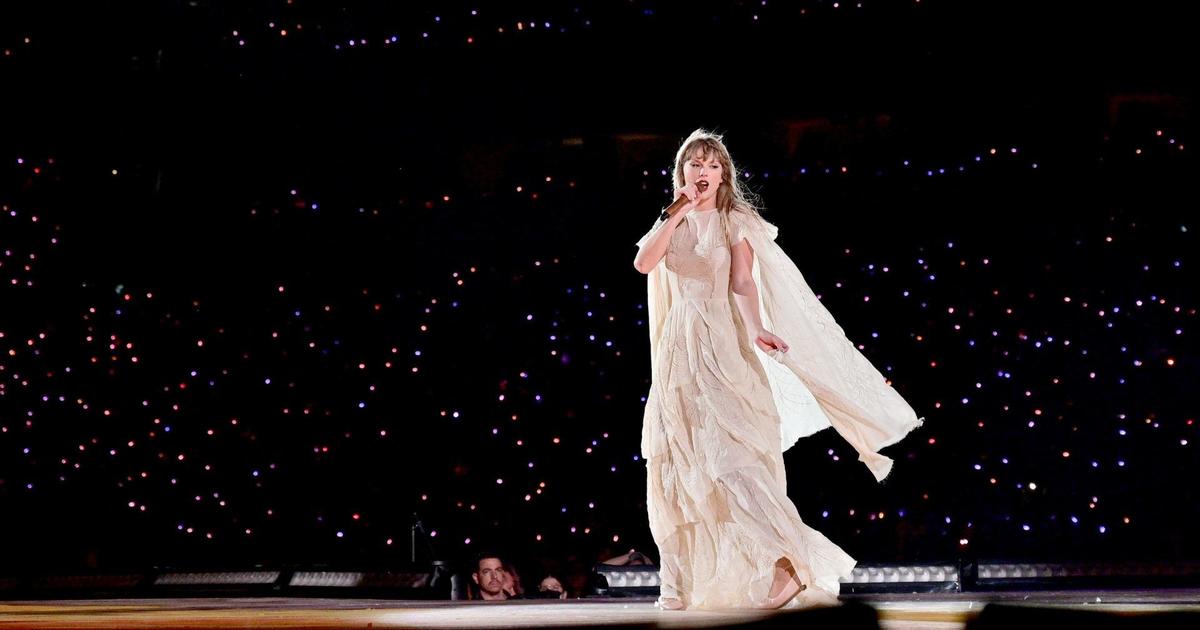How To See Rare Chance To See Northern Lights Overhead Delaware Valley Thursday Night
PHILADELPHIA (CBS) -- A powerful geomagnetic storm forecast to impact Earth on Thursday could trigger dazzling displays of the aurora borealis, or the Northern Lights, unusually far south across the United States.
Skywatchers in the Delaware Valley have an extremely rare chance, for our latitude, to witness the magnificent atmospheric phenomenon overhead Thursday night into early Friday morning.
The Geophysical Institute at the University of Alaska Fairbanks' aurora forecast indicates that the northern half of the region has the potential to witness dancing ribbons of violet, green, red, and/or blue light overhead and the southern half of the area maintains a shot to view the spectacular sight near the horizon.
The thick, green band indicates where you could observe the Northern Lights overhead. North of the thin, green line is where the aurora may occur near the horizon.
The aurora borealis forms when charged particles emitted from the sun ride a solar wind over to visit Earth's magnetic field.
A burst of solar wind on a massive scale is called a coronal mass ejection, or CME. The occurrence of a CME can increase the likelihood of auroral formation by delivering an abundance of solar particles to Earth's magnetic field.
These particles then travel toward the poles, where they then bump into atoms in Earth's upper atmosphere to thereby induce dramatic displays of light. This interaction is referred to as a geomagnetic storm.
NOAA's Space Weather Prediction Center has issued a G3 (Strong) geomagnetic storm watch in effect for Thursday in response to not one but two CMEs that erupted from the sun on Monday.
The color of the aurora is related to the type of atmospheric atoms with which the solar particles collide as well as the altitude at which the collision occurs.
Green auroral colors result from oxygen atoms up to 150 miles in altitude, red is a product of oxygen above 150 miles, blue is due to nitrogen atoms up to 60 miles, and violet is from nitrogen above 60 miles in altitude.
The most likely time of potential Northern Lights formation is between 9 p.m. and 2 a.m., but chances for viewing coincide with all hours of nighttime darkness.
Viewing is optimal on a moonless night and lucky for us, the moon will be illuminated at only 1%, or a teeny tiny crescent, Thursday night.
Not so fortunate for us, we'll be contending with cloud cover associated with severe thunderstorms Thursday evening, but a period of partial clearing appears possible after midnight.
Lastly, for your best chance to be mesmerized, choose an observation location away from interfering city lights. Happy spotting!




